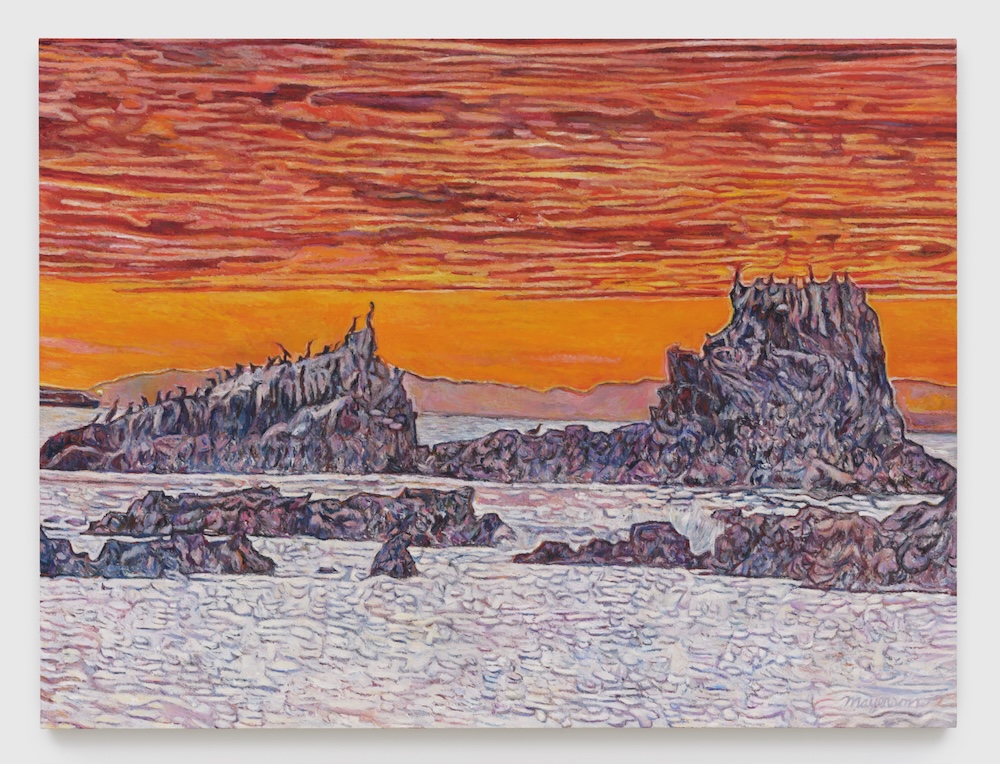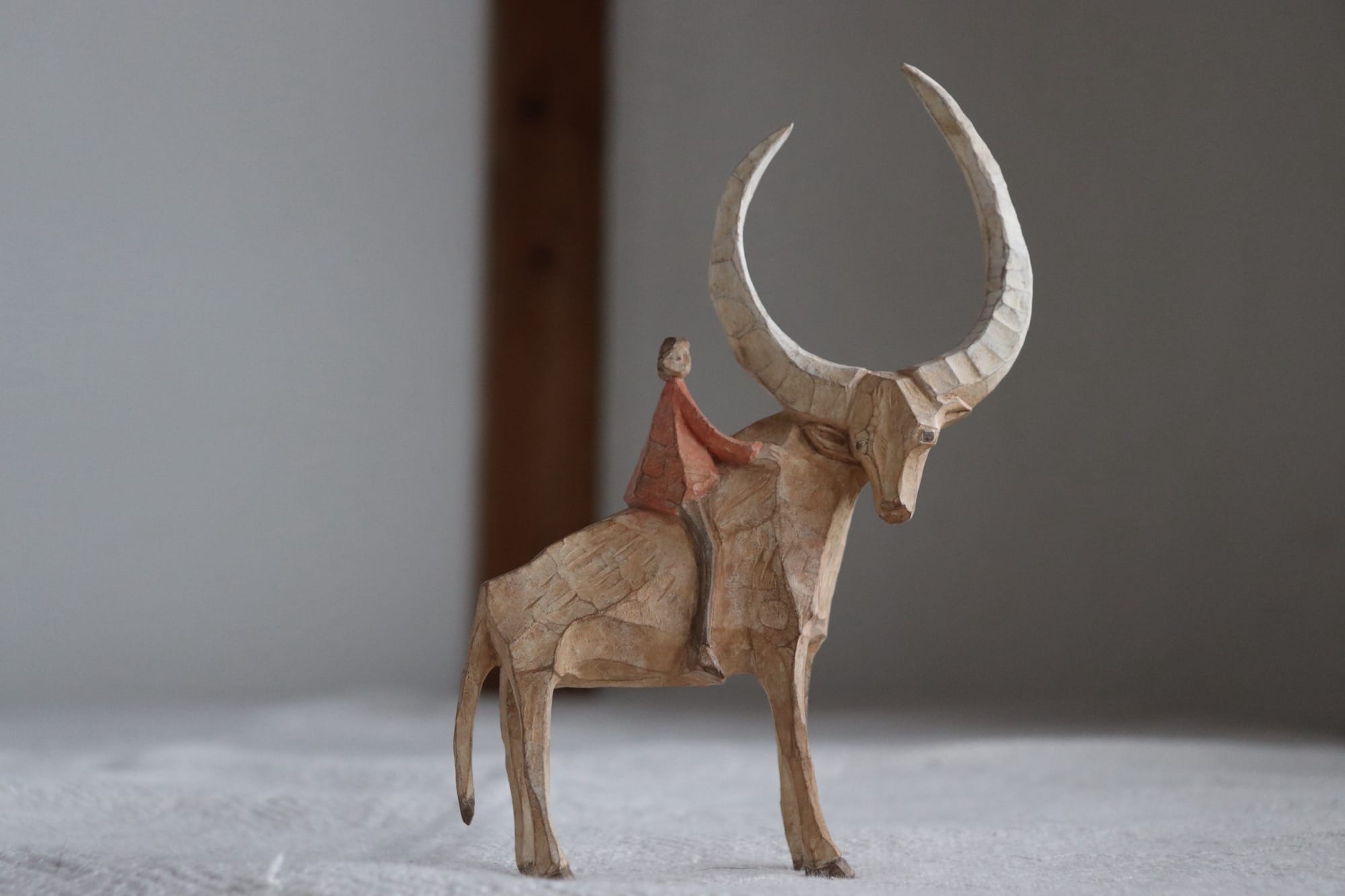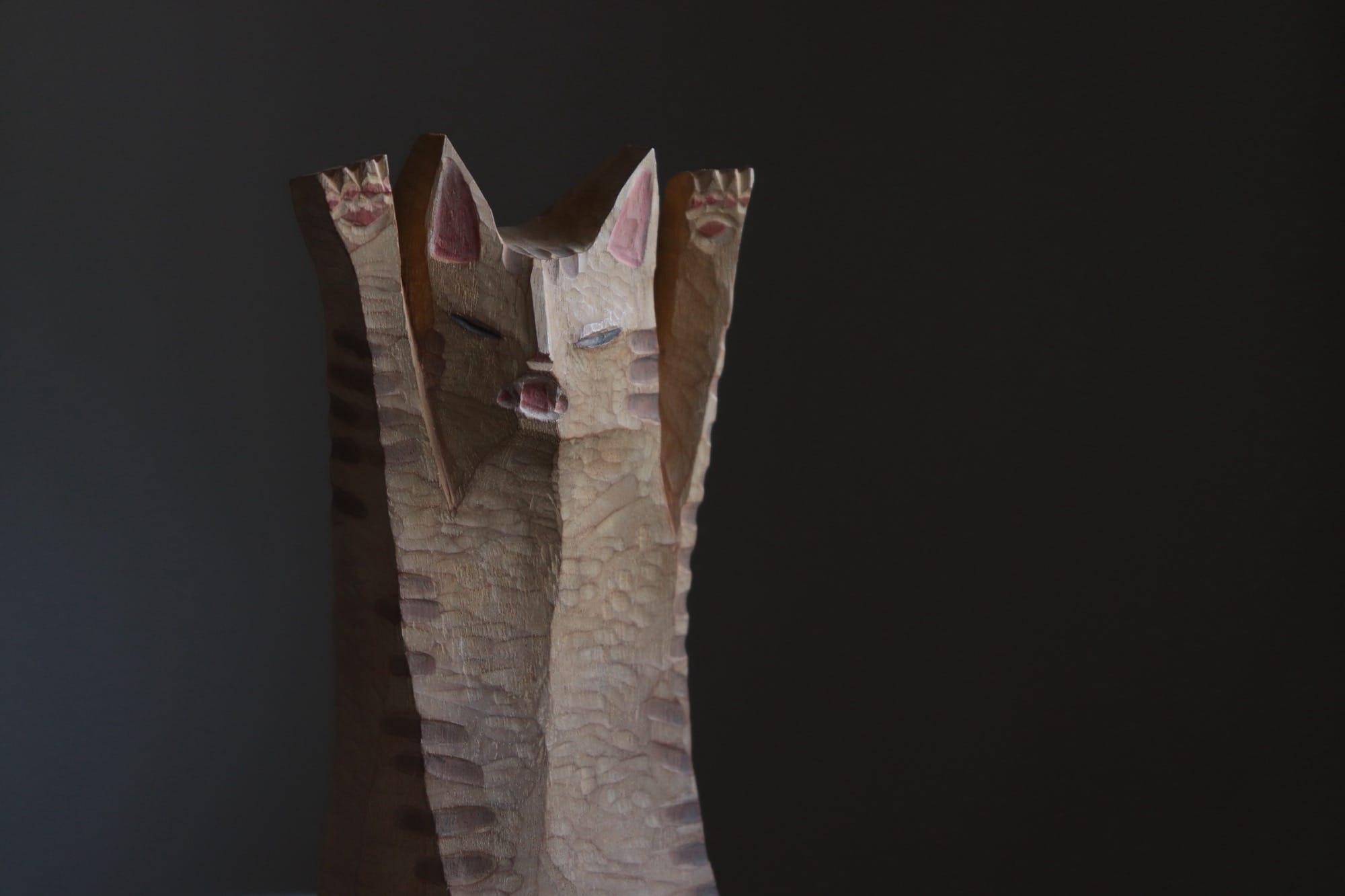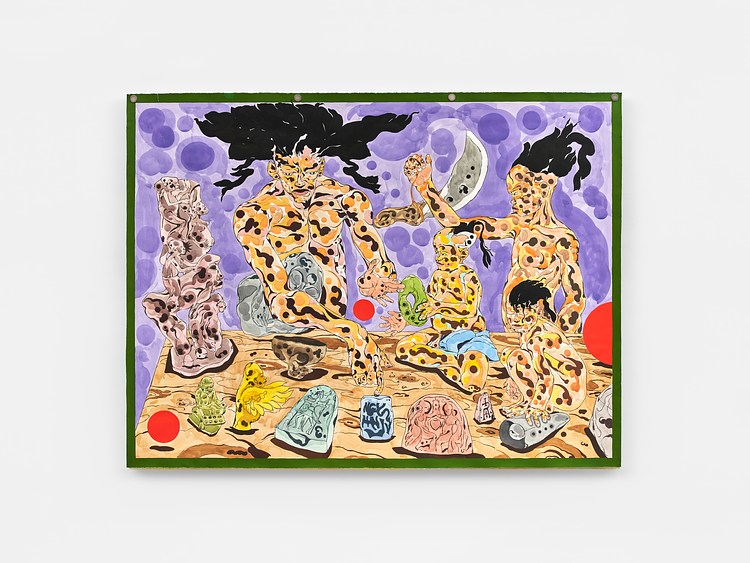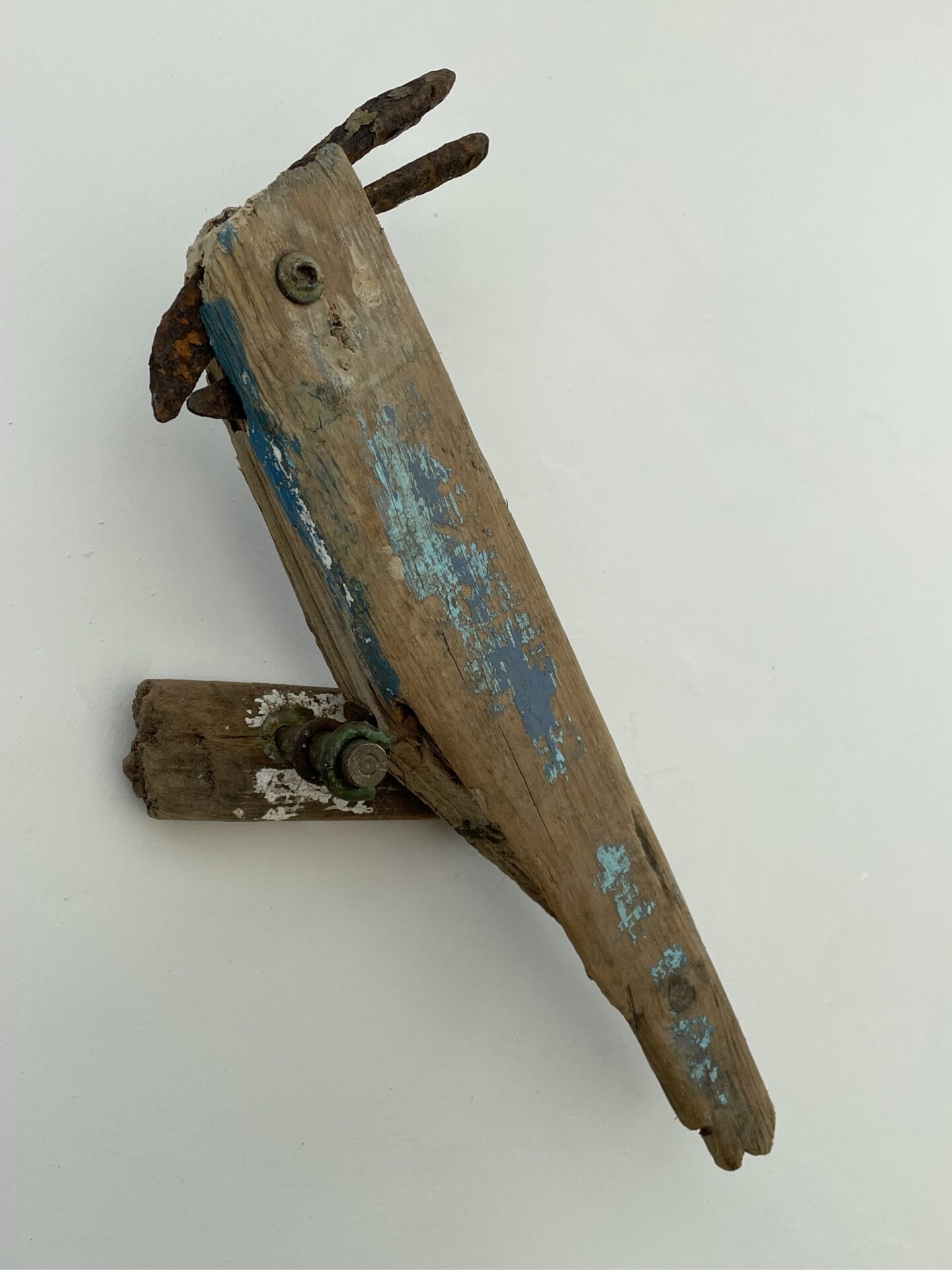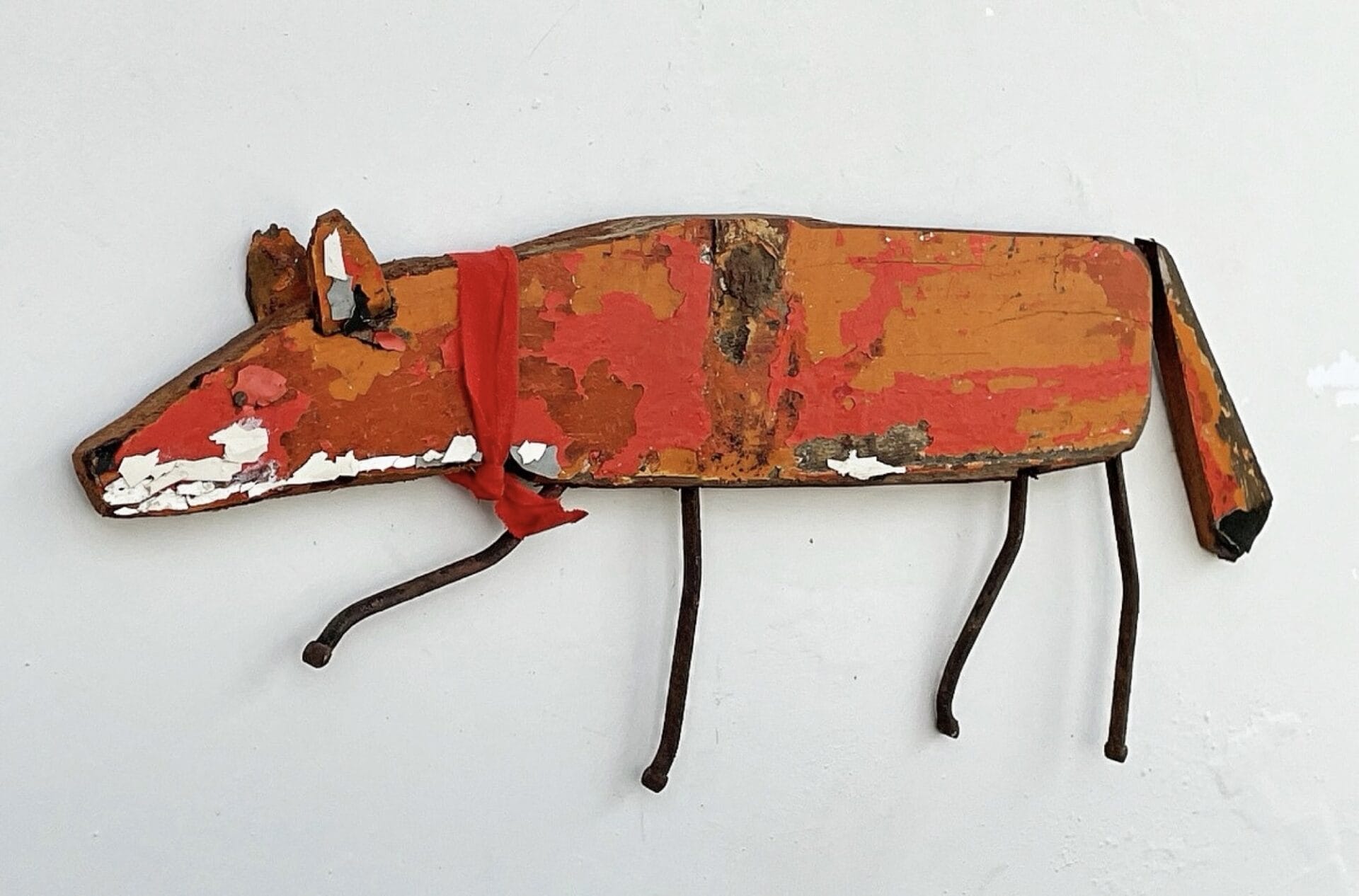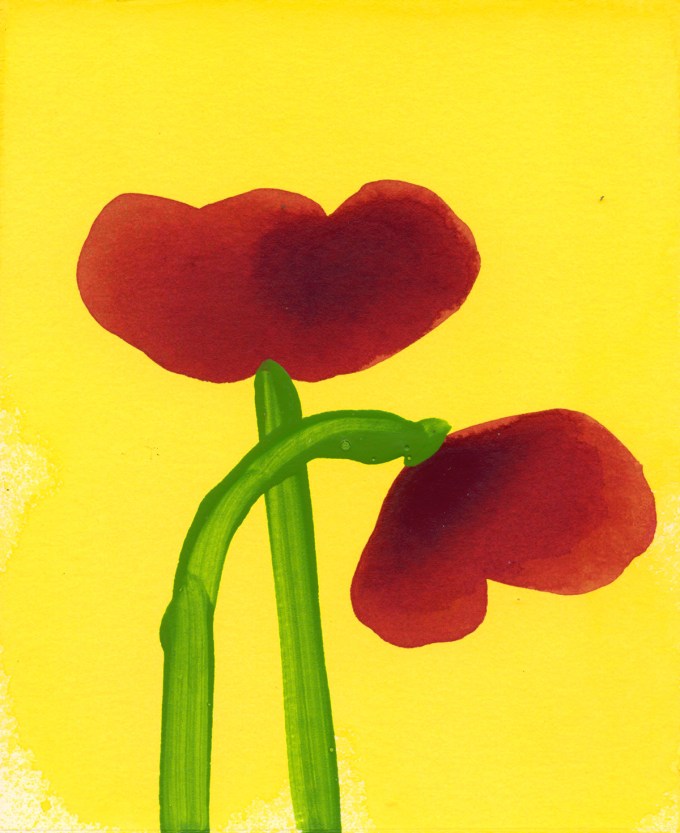Source: Juxtapoz Magazine – Keith Mayerson “My American Dream: City of Angels”
Tender Interactions Emerge from Wood in Fumiya Watanabe’s Delicate Sculptures — Colossal
My work is like a diary, like a poem,” says Fumiya Watanabe, who translates daily experiences and emotions into poignant wooden sculptures. Based in Gifu, Japan, the artist studied wood carving during university, then later with a master Inami artisan. Honing a technical understanding of the medium prompted Watanabe to immortalize things he saw and experienced into delicate artworks.The artist spends time doodling in his free time, cataloguing things he has seen. “My feelings appear in various forms,” he tells Colossal. “Events in my daily life, things from the past, people around me, and the dogs and cats I live with also come to me…. I am not trying to convey some big message in my works. I just give form to what I feel. I want the viewer to freely interpret and enjoy them.”Watanabe’s work will be on view in a solo exhibition in Tokyo at msb gallery from June 13 to 23. Find more on the artist’s website, and follow updates on Instagram.
Source: Tender Interactions Emerge from Wood in Fumiya Watanabe’s Delicate Sculptures — Colossal
Monday Musings — 10JUN24
What happened last week.
Well another week has gone by. I didn’t get to last weeks MM because i had cataract surgery on my right eye. WOW! Just doing that one eye, which had the worst cataract (I could barely see anything out of it.), made a big difference in my vision. Colors are brighter, and text is sharper. A book I had to put away because the size of the text made it impossible to read, was clear as day now. I’m having the other one done in a couple of months. I’m pretty excited.
Next
Well I found Tubi. Free movies and TV shows. Lots of art documentaries that can’t be found on YouTube, or other streamers.
Health
My health is better. I’m feeling a little stronger, and am eating better. I’m still not sleeping great. I sleep until about 1:33 -2:33 and then can’t get back to sleep. I can nap during the day so it’s not that bad. I just wish I didn’t feel cold all the time. It drives the wife crazy that I still have the heat on.
Some art to start your week.

Richard Ayodeji Ikhide at Candice Madey, New York | Contemporary Art Library
Documentation of Richard Ayodeji Ikhide at Candice Madey, New York is available at Contemporary Art Library.
Source: Richard Ayodeji Ikhide at Candice Madey, New York | Contemporary Art Library
Monday Musings — 27MAY24

There’s more great stuff (not political) here: https://www.saatchiart.com/neozero
His statement:
I am from Portland, Oregon and I am an artist here in the Pacific Northwest. Most of my work is figurative in nature but extends into abstract expressionism with a focus on portraiture, faces and geometric shapes.
Here’s Geir Opdal: http://geiropdal.com/inks-2/

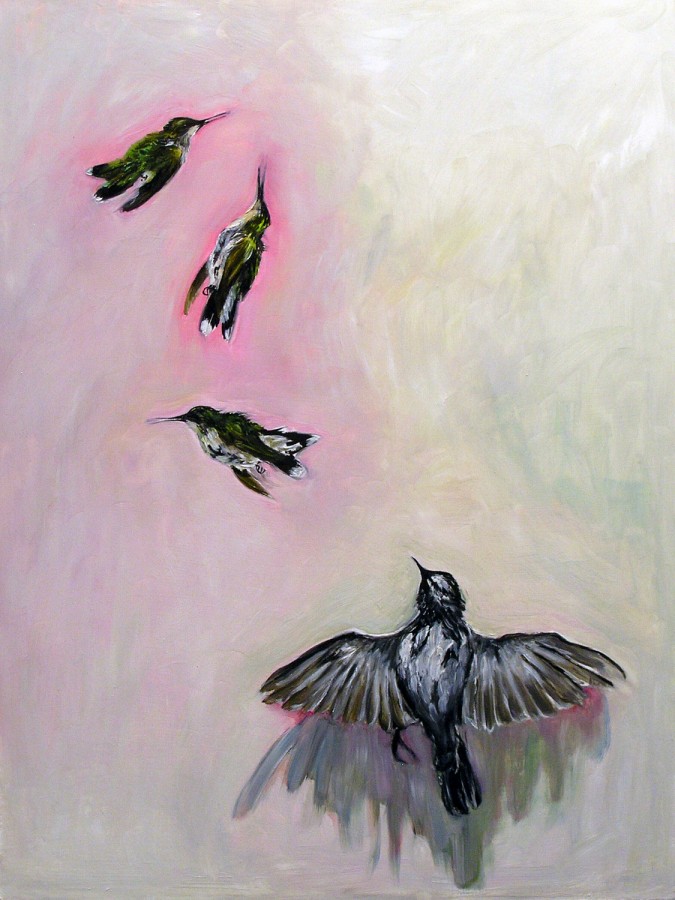
This is my online museum and store. You can wander from room to room and listen to conversation between paintings. You may also buy a signed print or an original work.
Wolff Land is the geographical state of my imagination. In my mind it is an actual place where islands are limned in gold as the sea tongues up fantastic shores.
Sphinxes wade through clear golden water among huge fields of grass (Sphinxland), hybrid dream creatures have multi canvas adventures (Catspider) and sometimes faces of friends show up (Portraits). The stories are driven by movement and color: stars unfol)d in vertical clouds over a mountainside
of blue thistles (The Mermaid’s Feet), a man wanders through a falling down house as birds fly through his heart (Waltz). But always I try to paint the
impossible: Light—light of the sun on objects, on water, the light of stars, the light around an amazing event; the light of love.
And, finally, here’s something from me:
Bob Dylan – Wedding Song (Official Audio)
And if there is eternity
I’d love you there
again.
Bob Dylan
Kirsty Elson Transforms Driftwood and Detritus into Whimsical Animal Sculptures — Colossal
For artist Kirsty Elson, a sliver of of driftwood or a scrap of metal is more than just a piece of trash.
Source: Kirsty Elson Transforms Driftwood and Detritus into Whimsical Animal Sculptures — Colossal
Monday Musings (on Wednesday) — 20MAY24
Steve Albini‘s (who just died of a heart attack at age 61) band Shellac dropped a new album this week, and it rips.
Stream and buy digital here:
You can get a CD or vinyl here
I missed Monday, but here this is.
Juxtapoz Magazine – A Wavy Place: Gabrielle Garland Gives a New Perspective
Flowers for Things I Don’t Know How to Say: A Tender Painted Lexicon of Consolation and Connection – The Marginalian
His paintings, loose and bright, become analogues of how abstract yet vivid the most interior experiences are — amorphous shapes saturated with feeling, blurry arrangements of contrasting parts of the self.
